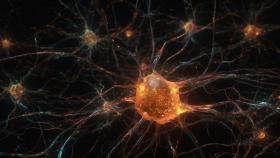
Wood’s research focuses on applying systems analysis approaches and engineering tools to identify novel clinical therapeutic targets for inflammatory diseases. These diseases, such as Alzheimer’s disease (AD) and inflammatory bowel disease (IBD), result in expansive physiological changes and are genetically complex. As a result, the development of therapeutic strategies has been challenging. By combining novel engineered in vitro platforms, mouse models, and multivariate computational systems analyses, we will be able to 1) capture a holistic systems-level understanding of these complex diseases and 2) isolate specific mechanisms driving each disease. The ultimate goal of Dr. Wood’s laboratory is to use these tools to identify new mechanisms driving disease onset and progression that will translate to clinically effective therapeutic strategies.
The Wood lab views the identification of new mechanisms as a closed-loop process that begins with analysis of human or mouse tissues. This analysis then informs tightly controlled in vitro tissue culture experiments in microfluidic assays and results in therapeutic strategies that will be translated to treatments in vivo. The first step consists of broad molecular analysis of inflamed tissues using state-of-the-art technologies, including multiplexed immunoassays, mass spectrometry and cytometry by time-of-flight (CyTOF). These data provide an extensive characterization of the disease. Computational systems analysis techniques are essential for identifying the molecular analytes that are most strongly related to disease state. Next, key analytes, or groups of analytes, identified from systems analysis are introduced into engineered microfluidic cell culture platforms to identify how they affect function and molecular signaling of specific cell types relevant to the disease. Microfluidic platforms enable the formation of geometries and cell-cell interactions that resemble the in vivo microenvironment, while enabling modulation of environmental conditions and cellular responses that cannot be easily achieved in vivo. By correlating inputs to the microfluidic assay with cellular responses, it will be possible to identify new mechanisms connecting the inflamed tissue microenvironment to functional cellular responses. These analyses will lead us to identify therapeutic strategies that will then be tested for efficacy in vivo.


